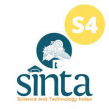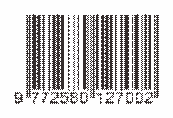PEER GROUP JUDGING: THE IMPLEMENTATION OF GROUP PIN-UP IN ARCHITECTURE DESIGN STUDIO
Abstract
The architecture design studio is a core course in architectural learning that trains students' abilities in the architectural design process. Unfortunately, students often fail to meet scheduled task targets, even though the time alloted is sufficient. This article examines the application of the group pin-up as a teaching method and its effectiveness in helping students meet deadlines for completing tasks in the Architecture Design III course, a studio attended by second year students. This study uses documents analysis (reviewing student design drawings to measure student achievement), and interviews (investigating changes in attitudes and perceptions of the students in pin-up group applications). We found that using the group pin-up strategy to impose an in-between deadline leads to improved discipline, better teamwork, and higher motivation due to competition in the group. This method is recommended in architectural design studios as a simulation practice for students before they move up and begin to work in the architecture profession.
Full Text:
PDFReferences
Charlie Smith (2011) Understanding Students’ Views of the Crit Assessment, Journal for Education in the Built Environment, 6:1, 44-67, DOI: 10.11120/jebe.2011.06010044
Chen, J., & Heylighen, A. (2006). Learning Design Teaching. In V. de V. G (Ed.), CSAAR (pp. 577–588). Rabat, Morocco. Retrieved from //lirias.kuleuven.be/bitstream/123456789/75755/1/CSAAR.pdf
Ciravoglu, A. (2014). Notes on architectural education : An experimental approach to design studio, 152, 7–12. http://doi.org/10.1016/j.sbspro.2014.09.146
Dannels, D. P. (2005). Performing Tribal Rituals: A Genre Analysis of “Crits” in Design Studios. Communication Education, 54(2), 136–160. doi:10.1080/03634520500213165
David McClean & Neasa Hourigan (2013) Critical Dialogue in Architecture Studio: Peer Interaction and Feedback, Journal for Education in the Built Environment, 8:1, 35-57, DOI: 10.11120/jebe.2013.00004
Gross, M. D., & Do, E. Y. (1997). The Design Studio Approach : Learning Design in Architecture Education. Retrieved from http://depts.washington.edu/dmgftp/publications/pdfs/edutech97-eyd.pdf
Gul, G., Afacan, Y. (2018) Analysing the Effects of Critique Techniques on the Success of Interior Architecture Students. http://doi.org/10.1111/jade.12145
Hancock, D. (2010). Cooperative Learning and Peer Orientation Effects on Motivation and Achievment. The Journal of Educational Research, 97:3, 159-168, DOI: 10.3200/JOER.97.3.159-168
Kuhn, S. (2001). Learning from the Architecture Studio : Implications for Project-Based Pedagogy *. International Journal Engng Ed., 17.
Lukman, N., Ibrahim, N., & Utaberta, N. (2012). Learning in Architecture Design Studio, 60(Figure 1), 30–35. http://doi.org/10.1016/j.sbspro.2012.09.342
McClean, D., Hourigan, N., (2013). Critical Dialogue in Architecture Studio: Peer Interaction and Feedback, Journal for Education in the Built Environment, 8:1, 35-57, DOI: 10.11120/jebe.2013.00004
Oh, Y., Ishizaki, S., Gross, M. D. & Do, E. Y. L. (2013) A theoretical framework of design critiquing in architecture studios, Design Studies, Vol. 34, No. 3, pp. 302–25.
Paker, N., & Lu, K. İ. O. Ğ. (2008). Architectural design studio organization and creativity. ITU AIZ, 4, 6–26.
Savic, M., Kashef, M., (2013). Learning outcomes in affective domain within contemporary architectural curricula. Int J Technol Des Educ (2013) 23:987–1004. http://doi.org/10.1007/s10798-013-9238-8
Shernoff D. J., Kelly S., Tonks., S.M., Anderson, B., Cavanagh, R. F., Sinha, S., Abdi, B. (2016). Student engagement as a function of environmental complexity in high school classrooms. Learning and Instruction, Vol. 43, 52-60.
Uberta, N., Hassanpour, B., Bahar, A., Ani, C. (2013). A Comprehensive Learning of Architecture Education: Understanding Critique Session as Learning Process and CriteriaBased Assessment in the Architecture Design Studio. http:// doi: 10.1016/j.sbspro.2013.10.709.
Zimmerman, B. J. (2008). Investigating Self-Regulation and Motivation: Historical Background, Methodological Developments, and Future Prospects. American Educational Research Journal, 45(1), 166–183.doi:10.3102/0002831207312909.
DOI: https://doi.org/10.17509/jare.v1i1.15808
Refbacks
- There are currently no refbacks.
Copyright (c) 2019 Journal of Architectural Research and Education

This work is licensed under a Creative Commons Attribution-NonCommercial-ShareAlike 4.0 International License.

This work is licensed under a Creative Commons Attribution-ShareAlike 4.0 International License.








